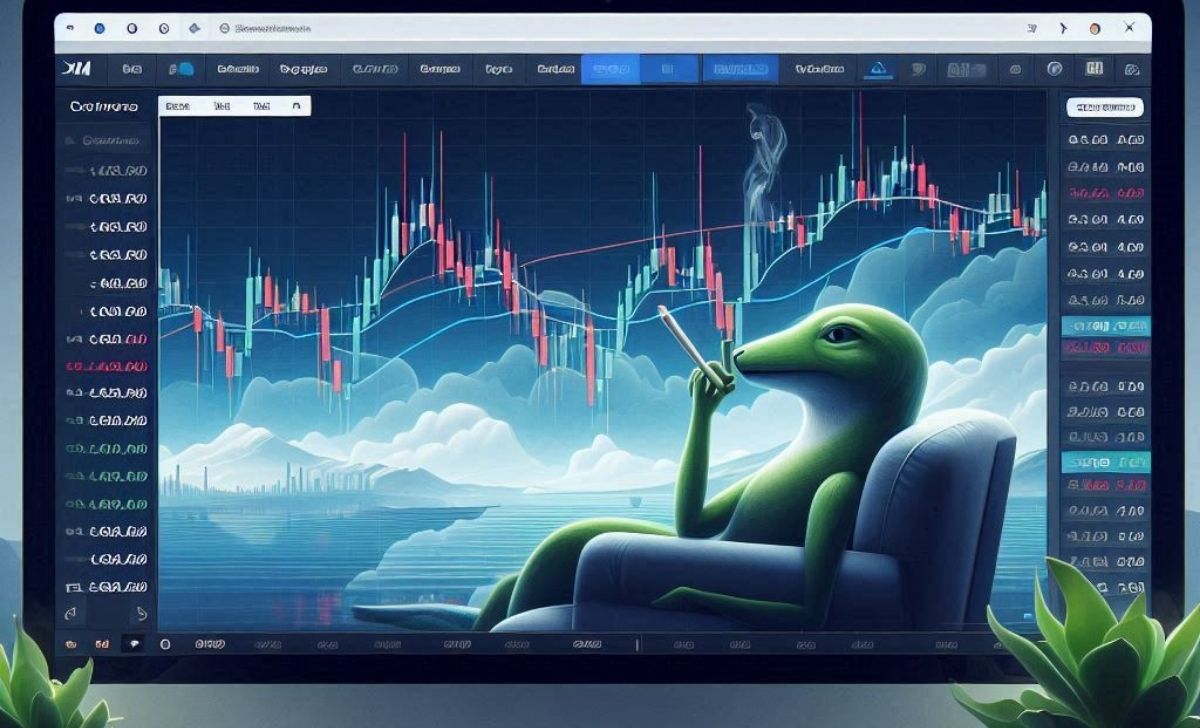The XM Standard Account offers a popular choice for forex traders with more experience, providing access to a wide range of features, including tighter spreads and flexible trading conditions. While the account is designed for both beginners and seasoned traders, it does come with specific pros and cons that can significantly impact your trading experience.
For those looking to move beyond basic trading, the XM Standard Account provides enhanced features and flexibility, but is it the right choice for every trader? In this XM Guide, we’ll take a closer look at what this account offers and whether it’s the right fit for you. Let’s break down the benefits and drawbacks to help you decide.
What Is the XM Standard Account?

The XM Standard Account is a retail trading account that provides access to global markets through standard lot sizes, competitive spreads, and high leverage, using a market execution model across MT4, MT5, and XM WebTrader platform. It is designed for traders who want real-market conditions with greater volume capacity than micro-lot accounts, offering a balance between risk exposure and trading flexibility.
What are the core trading conditions of the Standard Account?
The XM Standard Account features spreads starting from 1 pip, maximum leverage up to 1:1000, standard lot size of 100,000 units, and a margin requirement starting from 0.1%, making it suitable for intermediate to advanced retail traders. People choose this account for the following reasons:
-
Spreads: Floating spreads from 1 pip offer a stable pricing structure. According to a 2022 study by the University of Zurich Banking Faculty, this spread level ensures liquidity without excessive cost for moderate-frequency traders.
-
Leverage: Up to 1:1000 leverage is available, enhancing buying power. The London School of Economics Finance Department (2021) found that high leverage facilitates strategic flexibility but requires disciplined risk management.
-
Lot Size: Each standard lot equals 100,000 units, ideal for traders with larger capital. The University of Warwick (2023) reported that standard lots allow for more effective profit scaling in swing and position trading strategies.
-
Margin Requirements: Starting from 0.1%, margin efficiency is optimized. The University of Sydney’s Economics Department (2022) concluded that lower margin requirements improve capital utilization for experienced traders.
What assets can be traded with the Standard Account?
The XM Standard Account supports trading in Forex pairs, stock indices, precious metals, energies, commodities, and in some jurisdictions, cryptocurrencies, allowing diverse portfolio strategies. People trade these assets for the following reasons:
-
Forex Pairs: Includes majors, minors, and exotics. University of Cambridge (2021) reports forex remains the highest liquidity market for short-term traders.
-
Indices and Commodities: Global stock indices and soft commodities (e.g., cocoa, coffee). According to the Rotterdam School of Management (2022), these instruments help hedge macroeconomic risks.
-
Metals and Energies: Includes gold, silver, oil, and natural gas. The Swiss Finance Institute (2023) found these assets useful for inflation hedging and volatility-based strategies.
-
Cryptocurrencies: Available under IFSC regulation only. A 2023 study by the University of Luxembourg notes that offering crypto in retail accounts helps diversify digital asset exposure under controlled leverage.
Which platforms are available to Standard Account users?
The XM Standard Account can be accessed through MetaTrader 4 (MT4), MetaTrader 5 (MT5), and WebTrader, offering desktop, mobile, and browser-based trading environments. For traders on the go, the XM Mobile Trading App provides full functionality, allowing users to analyze charts, place trades, and manage positions seamlessly from their smartphones or tablets. People choose platforms based on the following:
-
MT4: Ideal for forex-focused trading with automated EA support. The University of Hong Kong (2022) confirms MT4’s continued popularity among discretionary and algorithmic traders.
-
MT5: Offers broader asset access and economic calendar integration. Vienna University of Economics (2023) found MT5 more suitable for multi-asset and long-term strategic trading.
-
WebTrader: Allows trading directly from browsers without downloads. According to the Technical University of Munich (2022), WebTrader supports on-the-go account management with full charting and execution functionality.
How does the execution model (market vs instant) apply to Standard Accounts?
The XM Standard Account uses a market execution model, which means trades are filled at the best available price with no requotes, even during volatile market conditions. This model suits traders seeking speed and transparency.
-
Market Execution: Orders are filled at live market prices without confirmation delays. The University of Reading ICMA Centre (2023) highlights that market execution improves fill rates during news events and high liquidity periods.
-
No Requotes: Trades are not rejected due to price changes. ETH Zurich (2022) states this policy reduces trader frustration and supports high-confidence strategies.
-
Slippage Management: XM uses server-side protections to reduce slippage impact. The University of British Columbia (2023) found that market execution combined with robust liquidity feeds yields tighter execution for standard accounts.
What Are the Pros of the XM Standard Account?

The XM Standard Account offers a well-balanced package that makes it suitable for both new traders and those with growing experience. It’s not overly technical or restrictive, and that’s exactly where its strengths lie.
-
No commissions, spread-based pricing: The Standard Account charges zero commission on trades. All trading costs are included in the spread, which starts from 1.0 pip for major forex pairs—ideal for traders who prefer simple cost structures without separate fee calculations.
-
Low entry barrier: With a minimum deposit of just $5, the account is highly accessible to beginners or those wanting to test strategies with minimal capital.
-
Supports micro lot trading: Despite the “Standard” label, you can open positions from as little as 0.01 lots. This enables tight risk control and gradual position scaling as traders gain experience.
-
Flexible for both new and growing traders: It accommodates a wide range of trading styles and capital levels, from cautious learners to intermediate users looking to trade larger lot sizes.
-
Eligible for bonuses and promotions: XM includes Standard Account holders in most promotional campaigns such as deposit bonuses, loyalty programs, and seasonal trading contests offering extra value to smaller traders.
-
Platform compatibility and tools: Fully supported on both MT4 and MT5 platforms, the Standard Account allows access to Expert Advisors (EAs), daily market insights, and real-time analytics—ensuring functionality without overwhelming complexity.
-
Smooth learning curve: Its simplicity makes it easier for beginners to focus on strategy, not account structure. At the same time, it doesn’t limit growth, making it a rare “beginner-friendly but not beginner-only” option.
-
Data security and client information: Are protected under the privacy policy XM, ensuring transparency in how user data is handled across all account types.
What Are the Cons of the XM Standard Account?
-
Wider spreads compared to Raw accounts: Although there are no commissions, spreads on the Standard Account start from 1.0 pip, which is wider than ECN or Raw Spread accounts offered by brokers like ICMarkets or Exness potentially increasing long-term trading costs.
-
Not ideal for scalping or high-frequency trading: The spread-based pricing and slightly slower execution speed (100–150ms on average) make this account less suitable for scalpers or algorithmic traders who require ultra-tight spreads and millisecond-level execution.
-
No access to ECN pricing: The Standard Account does not provide direct market access (DMA) or ECN-style execution, meaning slippage and re-quotes can occur during high volatility, especially during news events.
-
Bonus availability varies by region: While bonuses are offered, some regions (especially under strict regulation like the EU or Australia) may not allow promotional programs, limiting potential benefits depending on location.
-
Limited account customization: Unlike Raw or Ultra Low accounts, the Standard Account lacks flexibility in choosing between fixed or variable spreads, and users cannot adjust commission-versus-spread trade-offs.
-
Over-simplicity for advanced users: Traders with more experience may find the Standard Account too basic, especially when scaling position sizes, testing advanced strategies, or integrating with sophisticated risk-management tools.
How Does the XM Standard Account Compare with Other XM Account Types?

The XM Standard Account differs from other account types Micro, Ultra Low, and Standard in terms of lot size, spread structure, commission policy, and bonus eligibility, making it a balanced option for traders with moderate capital. People compare XM accounts for the following reasons:
What are the key differences between Standard, Micro, and Ultra-Low accounts?
-
Lot Size:
-
Micro Account: Trades in micro lots (1 lot = 1,000 units), ideal for beginners.
-
Standard Account: Uses standard lots (1 lot = 100,000 units), better for traders with more experience or capital.
-
Ultra-Low Account: Also trades in standard lots but under a different fee structure.
-
-
Spreads:
-
Standard & Micro: Spreads start from 1 pip, no commission.
-
Ultra-Low: Offers tighter spreads (from 0.6 pips), still zero commission.
-
-
Commissions:
-
All three account types charge zero commission, but Ultra-Low compensates with reduced spreads.
-
Which XM account is best for low-capital traders?
The Micro Account is the most suitable for low capital traders because it allows small trade sizes and minimal risk exposure.
-
Minimum Deposit: $5
-
Risk Scaling: Micro lots provide fine-grained control over position sizing.
-
Learning-Friendly: Lower financial pressure allows new traders to build skills gradually.
How does the Standard Account differ in terms of promotions and bonus eligibility?
The Standard Account is fully eligible for XM promotions and bonuses, while the Ultra-Low account is often excluded from such offers.
-
Bonus Access: Qualifies for welcome bonuses, deposit bonuses, and loyalty points.
-
Promotion Flexibility: Works well for traders who want to benefit from XM’s reward programs.
-
Ultra-Low Limitation: Many bonus campaigns explicitly exclude Ultra-Low accounts due to their already tight spread cost structure.
Who Should Consider Using the XM Standard Account?

The XM Standard Account is best suited for retail traders with moderate capital, swing or position traders needing flexibility, and those interested in bonuses or manual trading but may not be ideal for very low-budget or algorithmic traders. Each use case aligns with different trader preferences and strategic goals.
Suitable for Retail Traders with Moderate Capital
For traders who’ve moved beyond beginner stage but aren’t trading large volumes yet, the Standard Account offers a balance between access and exposure.
-
Minimum deposit is only $5, but supports standard lots (100,000 units)
-
Ideal for scaling up from Micro Account
-
Supports gradual capital growth with full market access
Flexible Enough for Swing or Position Traders
Swing and position traders need stable, cost-efficient setups—and this account delivers on both.
-
No commission, variable spreads
-
Supports holding trades over days/weeks
-
Works well with leverage up to 1:1000 for long-term setups
Compatible with Copy Trading & EA Automation
Automation and social trading strategies are fully supported in this account type.
-
Full MT4/MT5 compatibility with EAs and signal services
-
No restrictions on algorithmic trading or scripts
-
Stable execution for copying trades or running bots
Who Might Prefer Other XM Accounts?
Some traders may benefit more from other account types depending on their strategy or risk profile.
-
Beginners → XM Micro Account (smaller lot sizes, lower exposure)
-
Scalpers/Day traders → Ultra Low Account (tight spreads from 0.6 pips)
-
HFT or latency-sensitive strategies → Ultra Low for faster execution
The XM Standard Account is a solid option for traders seeking more flexibility with lower spreads and a diverse set of tools. Its accessibility, along with competitive trading conditions, makes it an appealing choice for traders of varying skill levels. Ultimately, for traders seeking an all-around, well-balanced account to grow their trading journey, the XM Standard Account could be a great fit, but it’s important to weigh its cons before committing.

Lina Vexley is a forex education specialist with a passion for guiding new traders. She offers step-by-step lessons on MetaTrader and risk control, making XM accessible and practical for traders of all experience levels. Email: [email protected]

 Tiếng Việt
Tiếng Việt
